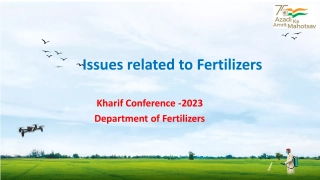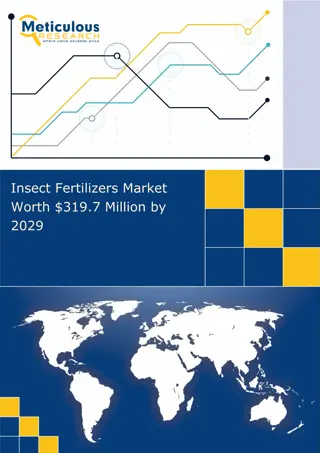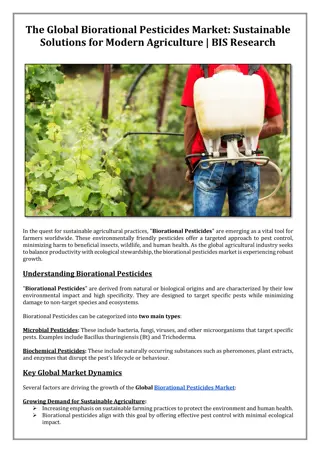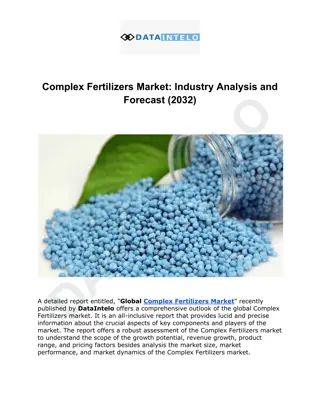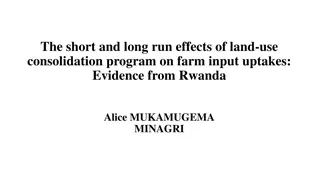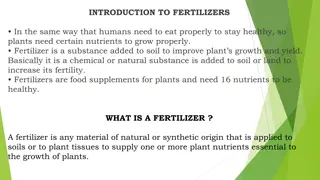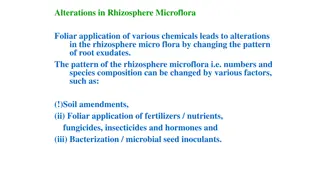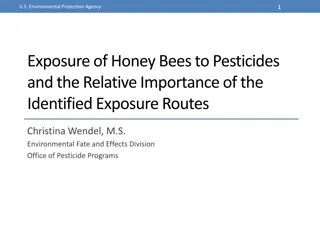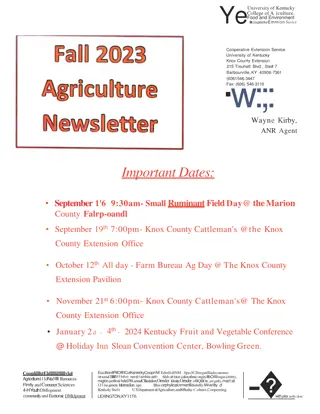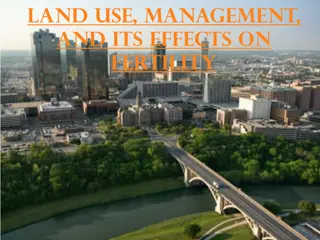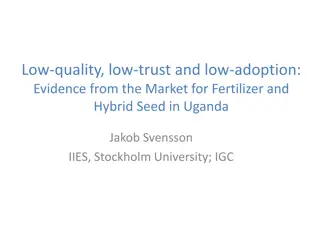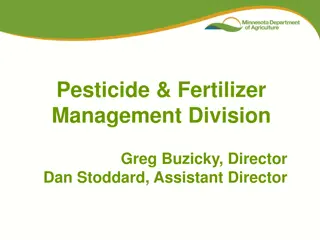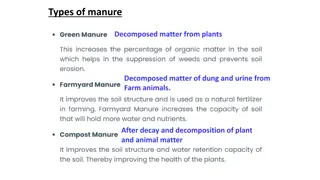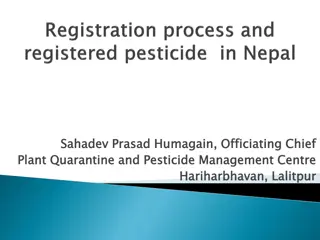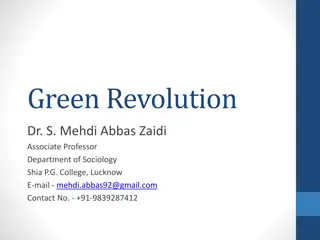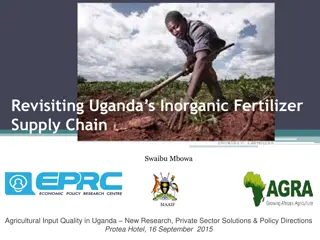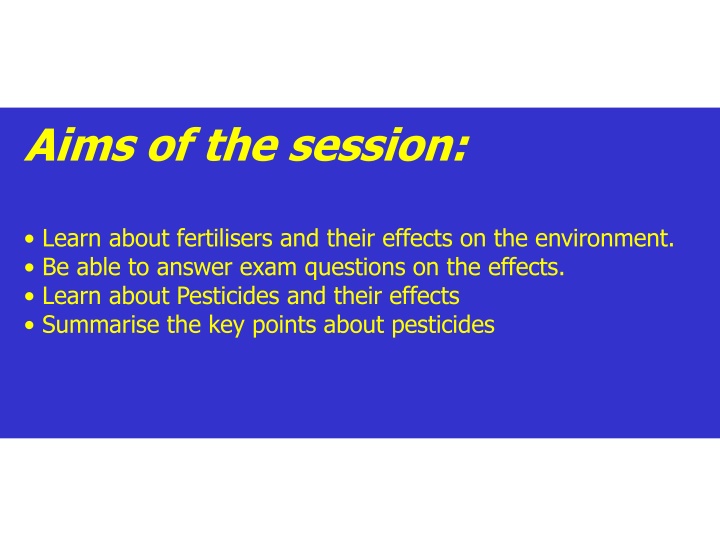
Impact of Fertilisers and Pesticides on Environment
Learn about the effects of fertilisers and pesticides on the environment, including eutrophication and biodiversity loss. Discover how biochemical oxygen demand (BOD) relates to eutrophication and the seasonal fluctuations in nitrate concentration. Gain insights into the consequences of excessive algal growth and the importance of sustainable agricultural practices.
Download Presentation

Please find below an Image/Link to download the presentation.
The content on the website is provided AS IS for your information and personal use only. It may not be sold, licensed, or shared on other websites without obtaining consent from the author. If you encounter any issues during the download, it is possible that the publisher has removed the file from their server.
You are allowed to download the files provided on this website for personal or commercial use, subject to the condition that they are used lawfully. All files are the property of their respective owners.
The content on the website is provided AS IS for your information and personal use only. It may not be sold, licensed, or shared on other websites without obtaining consent from the author.
E N D
Presentation Transcript
Aims of the session: Learn about fertilisers and their effects on the environment. Be able to answer exam questions on the effects. Learn about Pesticides and their effects Summarise the key points about pesticides
s e wa g e ( liq u id d o me s tic a n d in d u s tr ia l wa s te ) fe r tilis e r s Eutrophication min e r a ls e s p . n itr a te s min e r a ls The process of e s p . p h o s p h a te s o r g a n i c m a t e r i a l e u tr o p h ic a tio n a lg a l b lo o m c o mp e titio n fo r lig h t c o n s u me fa s t e n o u g h c o n s u me r s c a n 't d e a d p la n ts d e a d a lg a e d e tr itu s mo r e d e c o mp o s e r s u s e u p o x y g e n b y a e r o b ic r e s p ir a tio n ( in c r e a s e d B OD) a e r o b e s d ie ( in v e r te b r a te s , fis h , e tc ) a n a e r o b ic b a c te r ia th r iv e . Re le a s e NH, CH, HS 442
s e wa g e ( liq u id d o me s tic a n d in d u s tr ia l wa s te ) fe r tilis e r s min e r a ls e s p . n itr a te s min e r a ls e s p . p h o s p h a te s o r g a n i c m a t e r i a l e u tr o p h ic a tio n a lg a l b lo o m c o mp e titio n fo r lig h t c o n s u me fa s t e n o u g h c o n s u me r s c a n 't d e a d p la n ts d e a d a lg a e The process of Eutrophication cont. d e tr itu s mo r e d e c o mp o s e r s u s e u p o x y g e n b y a e r o b ic r e s p ir a tio n ( in c r e a s e d B OD) a e r o b e s d ie ( in v e r te b r a te s , fis h , e tc ) a n a e r o b ic b a c te r ia th r iv e . Re le a s e NH, CH, HS 442
Biochemical Oxygen Demand (BOD). This measures the rate of oxygen consumption by a sample of water, and therefore gives a good indication of eutrophication. A high BOD means lots of organic material and aerobic microbes, i.e. eutrophication
The nitrate concentration falls during spring and The nitrate concentration falls during spring and summer and rises during autumn and winter summer and rises during autumn and winter Less algal growth as autumn begins Less algal growth as autumn begins Possibly all plants have died Possibly all plants have died
Pesticides Include: Herbicides Insecticides Fungicides Bactericides
Pesticides Persistence + Lipid solubility= Bioacculmulation
Bioaccumulation E.g DDT w a t e rz o o p l a n k t o n 0 . 0 4 p p m s m a l l f i s h 0 . 5 p p m l a r g e f i s h 2 p p m b i r d s 2 5 p p m
This powerpoint was kindly donated to www.worldofteaching.com http://www.worldofteaching.com is home to over a thousand powerpoints submitted by teachers. This is a completely free site and requires no registration. Please visit and I hope it will help in your teaching.

